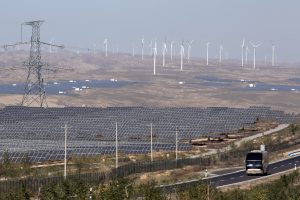Who is afraid of China’s climate strategy? To some, the very question may appear unwarranted. Just in the past two years, China’s surprise commitment to achieve carbon neutrality by 2060, the announcement it will discontinue funding of new coal power plants internationally, and its introduction of new guidance on greening the Belt and Road Initiative, have all been a cause for optimism and cautious celebration. To top this off, China’s leading climate negotiator, Xie Zhenghua, announced at COP27, this year’s United Nations Climate Change Conference, that Beijing is close to releasing its plan on methane emissions reductions.
Such high-level declarations are indicative of Beijing’s determination to assume greater climate leadership responsibilities, willingness to work on climate commitments even in the absence of bilateral cooperation, and readiness to take a strong unilateral stand on climate, all without expecting concessions from others. The flurry of climate-related pronouncements also suggests a considerable central government capacity to consolidate the domestic institutional base and integrate climate-related decisions into a broader understanding of economic development.
Concerns about China’s strategy may also appear superfluous given the aforementioned announcements’ alignment with long-standing global frameworks and international agreements developed over the course of the past three decades. Let it be recalled, for example, that the basis for Beijing’s carbon and methane emissions pledges dates back not only to the 2015 Paris Agreement, but also to the Kyoto Protocol, the first international agreement on an intent to curb greenhouse gas (GHG) emissions.
At the time of the Kyoto meeting 25 years ago in 1997, China and the bloc of G-77 developing countries were not required to make any commitments on GHG emissions. Nevertheless, the protocol itself created the now taken-for-granted and internationally recognized framework for collective climate action. It was only at the Kyoto meeting that there was a global recognition among world governments on the need to acknowledge and commit to addressing the planetary harm of GHG emissions.
In a concerted effort to align itself with this new global understanding, the Chinese government at the time also initiated a gradual institutional reform so as to ensure the means for government coordination on climate. Essentially, the significance of introducing domestic-level climate policy is perhaps best understood in the fact that climate change targets began to be included as legally binding targets in China’s national development plans. As such, sustainability and environmental protection, along with GDP growth, became part of the performance evaluation for local governments.

































